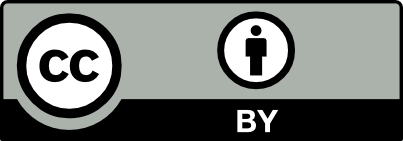Volume 33, Issue 225 (10-2023)
J Mazandaran Univ Med Sci 2023, 33(225): 45-57 |
Back to browse issues page
Download citation:
BibTeX | RIS | EndNote | Medlars | ProCite | Reference Manager | RefWorks
Send citation to:



BibTeX | RIS | EndNote | Medlars | ProCite | Reference Manager | RefWorks
Send citation to:
Fasahi J, Baghshani H, Moosavi Z. Evaluating the Effectiveness of Betaine Against Oxidative and Histopathological Damage Caused by Acrylamide in the Rat Brain. J Mazandaran Univ Med Sci 2023; 33 (225) :45-57
URL: http://jmums.mazums.ac.ir/article-1-19517-en.html
URL: http://jmums.mazums.ac.ir/article-1-19517-en.html
Abstract: (1703 Views)
Background and purpose: Acrylamide is a chemical compound that is widely used in the production of paper, paint, and other industrial products. Food and cigarette smoke are primary sources of exposure to acrylamide. Betaine is a native compound with antioxidant properties and has also been reported as a protective agent against tissue damages induced by some toxicants. This study aimed to evaluate the possible effectiveness of betaine against the damage caused by acrylamide in brain.
Materials and methods: In this experimental study, 28 male rats were randomly divided into four groups. The first group was considered as the control group. Group 2 received acrylamide (50 mg/kg;ip). Group 3 received the diet containing 2% betaine in addition to acrylamide. Rats in group 4 received diet containing 2% betaine. At the end of the experimental period (the eleventh day), brain tissue was sampled for biochemical and histopathological evaluation. ANOVA and Bonferroni tests were utilized to compare the means of biochemical data, and Kruskal-Wallis and Mann-Whitney tests were employed to investigate histopathological data. Calculations were conducted using SPSS/PC V21.
Results: In the group receiving acrylamide, significant reduction in catalase and superoxide dismutase and significant increase in proteins carbonyl groups and malondialdehyde were observed in comparison to the control group (P<0.05). Hyperemia, microgliosis, and ischemic cell changes in the brain tissue of the group receiving acrylamide increased significantly compared to the control group (P<0.05). Administration of betaine in acrylamide+betaine group caused an increasing trend of catalase and superoxide dismutase relative to group 2 in a manner that were comparable with those of the control group. Likewise, betaine administration in acrylamide+betaine group significantly (P<0.05) reduced the severity of ischemic cell changes and non-significantly reduced hyperemia and microgliosis compared to the group receiving acrylamide.
Conclusion: Betaine administration could be beneficial to oxidative indices alterations and could improve tissue damage induced by acrylamide in brain of rats.
Materials and methods: In this experimental study, 28 male rats were randomly divided into four groups. The first group was considered as the control group. Group 2 received acrylamide (50 mg/kg;ip). Group 3 received the diet containing 2% betaine in addition to acrylamide. Rats in group 4 received diet containing 2% betaine. At the end of the experimental period (the eleventh day), brain tissue was sampled for biochemical and histopathological evaluation. ANOVA and Bonferroni tests were utilized to compare the means of biochemical data, and Kruskal-Wallis and Mann-Whitney tests were employed to investigate histopathological data. Calculations were conducted using SPSS/PC V21.
Results: In the group receiving acrylamide, significant reduction in catalase and superoxide dismutase and significant increase in proteins carbonyl groups and malondialdehyde were observed in comparison to the control group (P<0.05). Hyperemia, microgliosis, and ischemic cell changes in the brain tissue of the group receiving acrylamide increased significantly compared to the control group (P<0.05). Administration of betaine in acrylamide+betaine group caused an increasing trend of catalase and superoxide dismutase relative to group 2 in a manner that were comparable with those of the control group. Likewise, betaine administration in acrylamide+betaine group significantly (P<0.05) reduced the severity of ischemic cell changes and non-significantly reduced hyperemia and microgliosis compared to the group receiving acrylamide.
Conclusion: Betaine administration could be beneficial to oxidative indices alterations and could improve tissue damage induced by acrylamide in brain of rats.
Type of Study: Research(Original) |
Subject:
Sports biomechanics
Send email to the article author
| Rights and permissions | |
 |
This work is licensed under a Creative Commons Attribution-NonCommercial 4.0 International License. |







